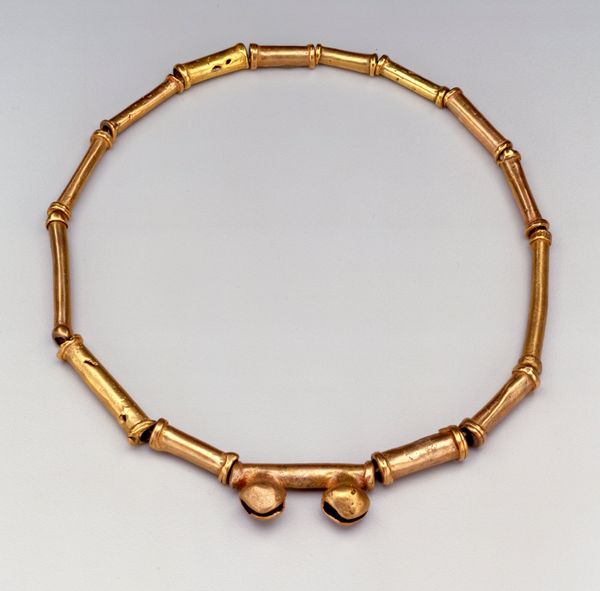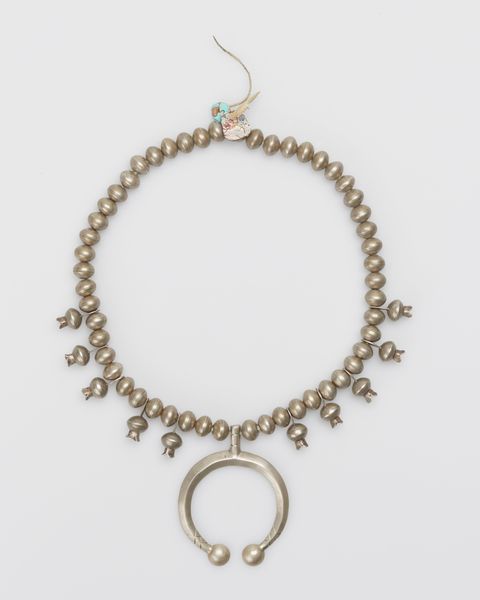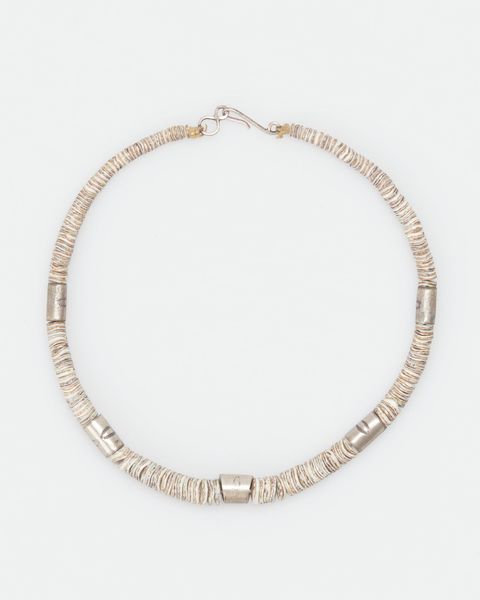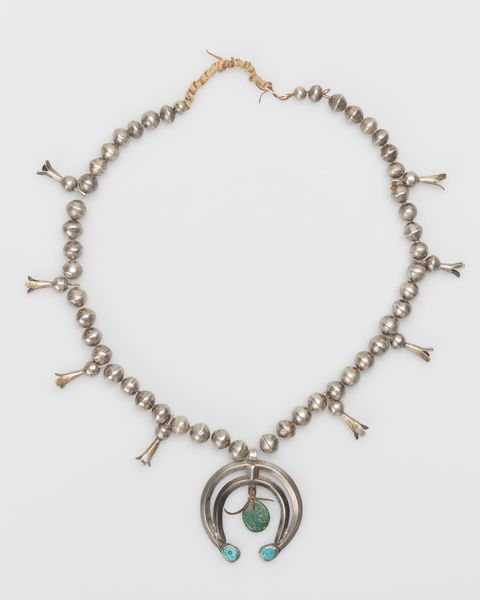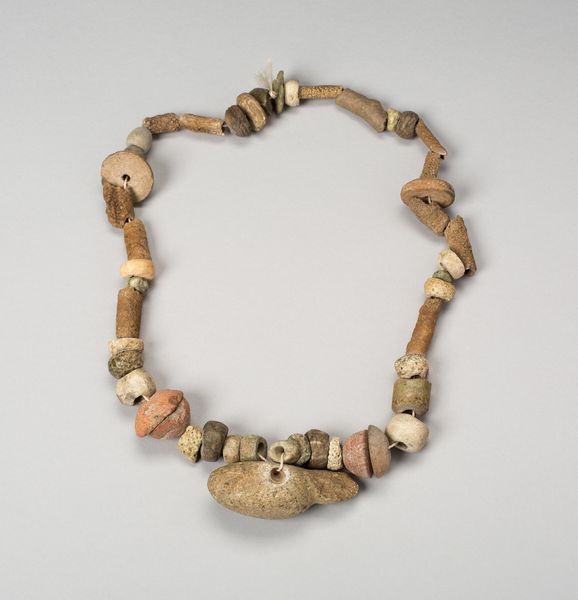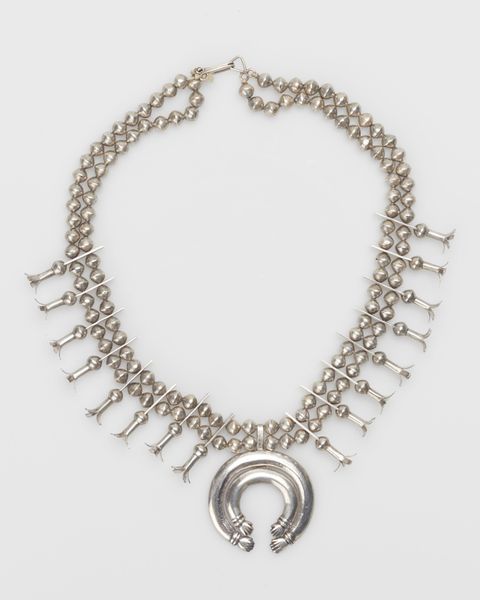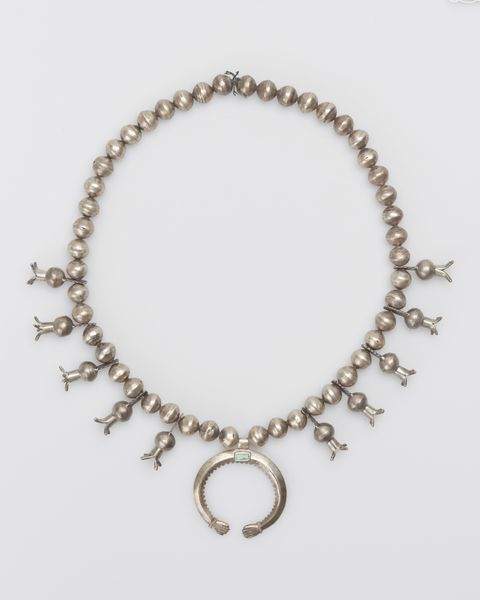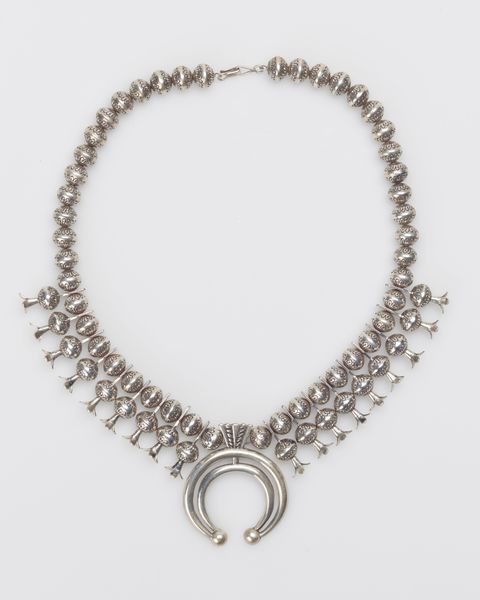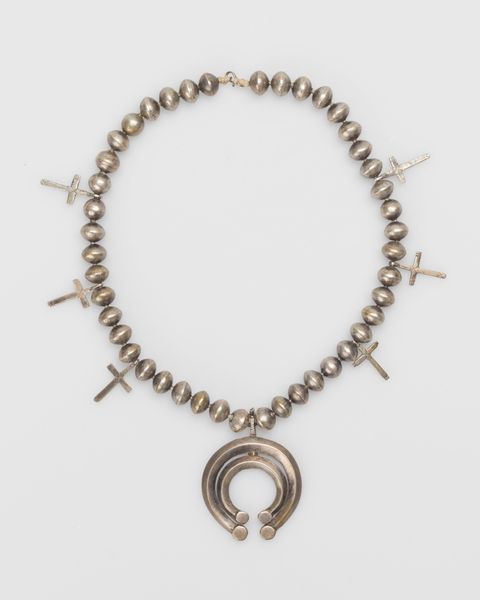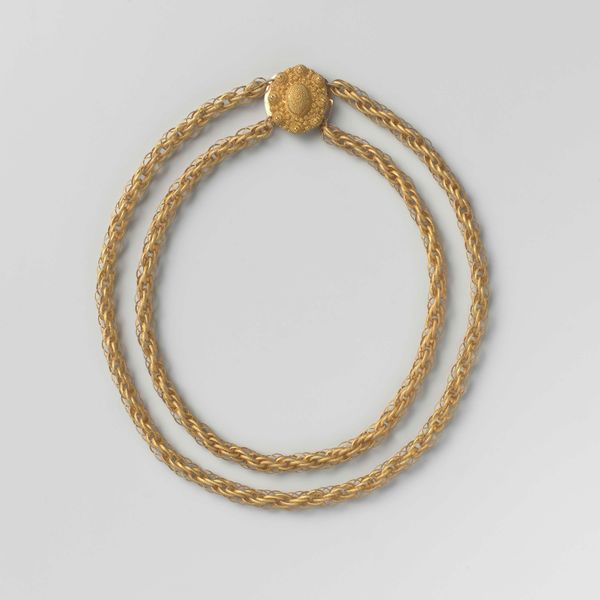
carving
#
carving
#
indigenous-americas
Dimensions: L. 38.7 cm (15 1/4 in.)
Copyright: Public Domain
Curator: We’re looking at a "Beaded Necklace with Three Celt Pendants", possibly dating from 300 to 700 AD. It's part of the Art Institute of Chicago’s collection and gives us a glimpse into Nicoya craftsmanship. Editor: It feels quite weighty somehow, doesn’t it? Earthy, grounded. The light catches those pendants in a way that makes them almost seem… alive. I keep imagining the wearer, their story. Curator: It is certainly evocative. When we talk about ‘Nicoya’, we’re referencing a culture known for its skill in carving, evident in this piece. It serves not just as jewelry but potentially as a marker of status, belief, or tribal affiliation. Editor: It makes you consider how something functional transforms into art, doesn’t it? The repetition of the beads creates this rhythmic pattern. Almost like a meditative chant. Curator: Precisely. The creation of the beads would involve labor – sourcing materials, shaping them. And it suggests a level of resource management and social organization. This isn’t just decoration; it's deeply entwined with the community’s economy and culture. Editor: Do you think the choice of material was intentional, in a symbolic way? The colour reminds me of jade or river stone... something powerful that could bless the wearer with protective energies. Curator: Undoubtedly. Every element from the choice of beads, likely requiring sophisticated exchange networks for their acquisition, to the carved celt pendants represents conscious choices reflective of Nicoya cosmology. Editor: I also find myself considering who crafted this; how many hands shaped each bead, smoothed each edge. A piece carrying that much intentional work definitely exudes that powerful sense of being hand made. Curator: And let’s not forget the object’s potential use value beyond adornment—could it also have played a part within exchange systems, perhaps possessing inherent monetary value dependent on the materials from which it was created. Editor: Yes, an echo of forgotten commerce! Imagining this traversing landscapes. Makes you feel wonderfully small, contemplating deep histories within art. Curator: I agree, and it is essential to think critically, grounding any interpretation in material evidence available for study through archeology and object based research.
Comments
No comments
Be the first to comment and join the conversation on the ultimate creative platform.
